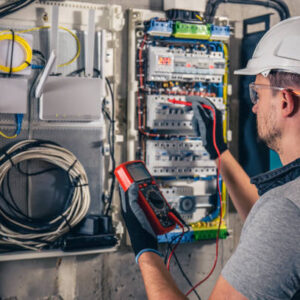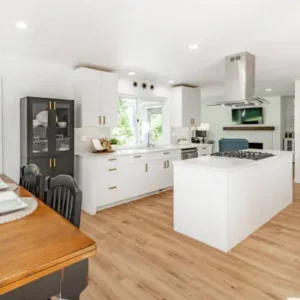Upgrading your bathroom can be one of the most rewarding home improvement projects, and bathtub installation often takes center stage in that transformation. Whether you are remodeling for luxury, accessibility, or practicality, installing a new bathtub can significantly enhance the look, comfort, and value of your home.
At A&L Tile Company LLC, we specialize in professional bathtub installation services that combine expert craftsmanship with premium materials to bring your bathroom vision to life. With years of experience serving homeowners and remodelers, our team is dedicated to delivering high-quality results that stand the test of time.
In this in-depth guide, you’ll learn everything you need to know about bathtub installation—from choosing the right type and material to understanding the installation process, costs, and maintenance tips. If you’re searching for a reliable and long-lasting solution, this article is tailored for homeowners, renovators, and even first-time buyers looking to make an informed decision.
Why Bathtub Installation is a Smart Home Investment
Installing a new bathtub is more than just an aesthetic upgrade. It offers tangible benefits that go beyond looks. A new tub can elevate your daily comfort by creating a spa-like environment in your own home. With features such as ergonomic shapes, hydrotherapy jets, and heat retention capabilities, a properly installed bathtub can become your go-to space for relaxation and rejuvenation.
More importantly, a bathroom remodel that includes bathtub installation can significantly raise the market value of your property. Buyers often consider updated bathrooms a major selling point, especially when modern fixtures are installed. If you’re planning to sell your home in the near future, this upgrade can make your listing more competitive and appealing.
Beyond comfort and resale value, newer bathtubs are designed with efficiency in mind. They often use less water while still offering a deep soaking experience. Some models even help reduce energy costs by maintaining water temperature longer. Lastly, for households with elderly members or those with mobility challenges, safety-enhanced tubs—like walk-in models—provide greater accessibility and peace of mind.
Selecting the Right Bathtub for Your Space
Choosing the right bathtub begins with assessing your space, lifestyle needs, and design preferences. Alcove bathtubs are a popular option for smaller bathrooms, as they fit snugly between three walls and often double as a shower. They’re practical, space-saving, and cost-effective.
For homeowners with more generous space, freestanding bathtubs serve as a visual centerpiece. These tubs exude elegance and offer design flexibility, often available in contemporary and vintage styles. If you’re looking for a more customized installation, drop-in bathtubs allow for creative enclosures and elevated platforms, blending into the overall design of the bathroom.
Another great choice, especially for maximizing corner space, is the corner tub, which offers a large bathing area and is perfect for soaking. For those with mobility needs, walk-in bathtubs are a safe and practical choice, designed with doors and seating to make bathing easier and more secure.
Understanding Bathtub Materials
The material of your bathtub not only influences its appearance but also affects weight, durability, and cost. Acrylic bathtubs are among the most common choices due to their lightweight nature and excellent heat retention. They are also easy to install and maintain.
Fiberglass is another affordable option, though it is less durable and may fade over time. Cast iron bathtubs, on the other hand, are incredibly long-lasting and retain heat exceptionally well, but they are very heavy and may require floor reinforcement during installation. For a more premium finish, materials like enameled steel or natural stone resin offer luxurious aesthetics but come at a higher price point.
The Bathtub Installation Process Explained
Once you’ve selected your bathtub, the next step is understanding the installation process. While some experienced DIYers may be tempted to tackle the job themselves, it’s highly recommended to hire a professional contractor or licensed plumber. Bathtub installation involves both plumbing and carpentry skills and must adhere to local building codes.
The process typically begins with the removal of the old bathtub, which includes disconnecting plumbing fixtures and assessing the condition of the floor and walls. Once cleared, the installer will prepare the site, ensuring it is level and structurally sound. The new bathtub is then positioned and secured according to its type—alcove, drop-in, freestanding, etc.
Next, the plumbing connections are made, including the drain, overflow, and water supply lines. It’s crucial that these connections are watertight to prevent leaks and future damage. Once everything is connected, the area around the tub is sealed using waterproof caulking and any necessary tiling or trim is applied. A thorough inspection and test follow to ensure everything is functioning properly.
Costs Associated with Bathtub Installation
The cost of bathtub installation can vary significantly depending on the type of tub, material, complexity of the job, and local labor rates. A basic replacement in an existing alcove may cost between $500 and $1,500. More elaborate installations, such as freestanding or whirlpool tubs, can range from $2,000 to $5,000 or more. Walk-in bathtubs, which include built-in doors and safety features, can cost between $3,000 and $8,000, including installation.
In addition to the cost of the tub itself, factors like demolition, plumbing adjustments, and floor reinforcement can add to the final bill. Homeowners should always get multiple quotes and work with reputable contractors to avoid unexpected costs or poor workmanship.
Maintaining Your New Bathtub
Proper maintenance will keep your new bathtub looking great and functioning well for years to come. Regular cleaning using mild, non-abrasive cleaners helps prevent staining and build-up. Avoid harsh chemicals that can degrade the finish or damage seals. It’s also wise to check the caulking and seals every few months and reapply if needed.
For jetted tubs, follow the manufacturer’s instructions for cleaning the internal systems to prevent buildup of soap scum and bacteria. If your tub is made from a more delicate material like fiberglass or enameled steel, be extra cautious with cleaning tools and products.
Frequently Asked Questions (FAQs)
1. How long does it take to install a bathtub?
Most professional installations can be completed within 1 to 2 days. However, additional time may be required for plumbing updates, tiling, or special features.
2. Can I install a bathtub myself?
While it is possible, bathtub installation involves plumbing and may require permits. Hiring a licensed professional is recommended for a safe and code-compliant job.
3. Do I need a permit for bathtub installation?
Yes, in most areas a permit is required, especially if plumbing changes are involved. Always check with your local municipality before beginning the project.
4. How do I choose the right bathtub size?
Measure your bathroom layout carefully and consider who will be using the tub. Standard bathtubs are around 60 inches long, but larger or deeper options are available for soaking or therapeutic purposes.
5. What is the average lifespan of a bathtub?
Depending on the material and maintenance, bathtubs can last anywhere from 10 to 30 years. Cast iron and stone resin models tend to last the longest.





